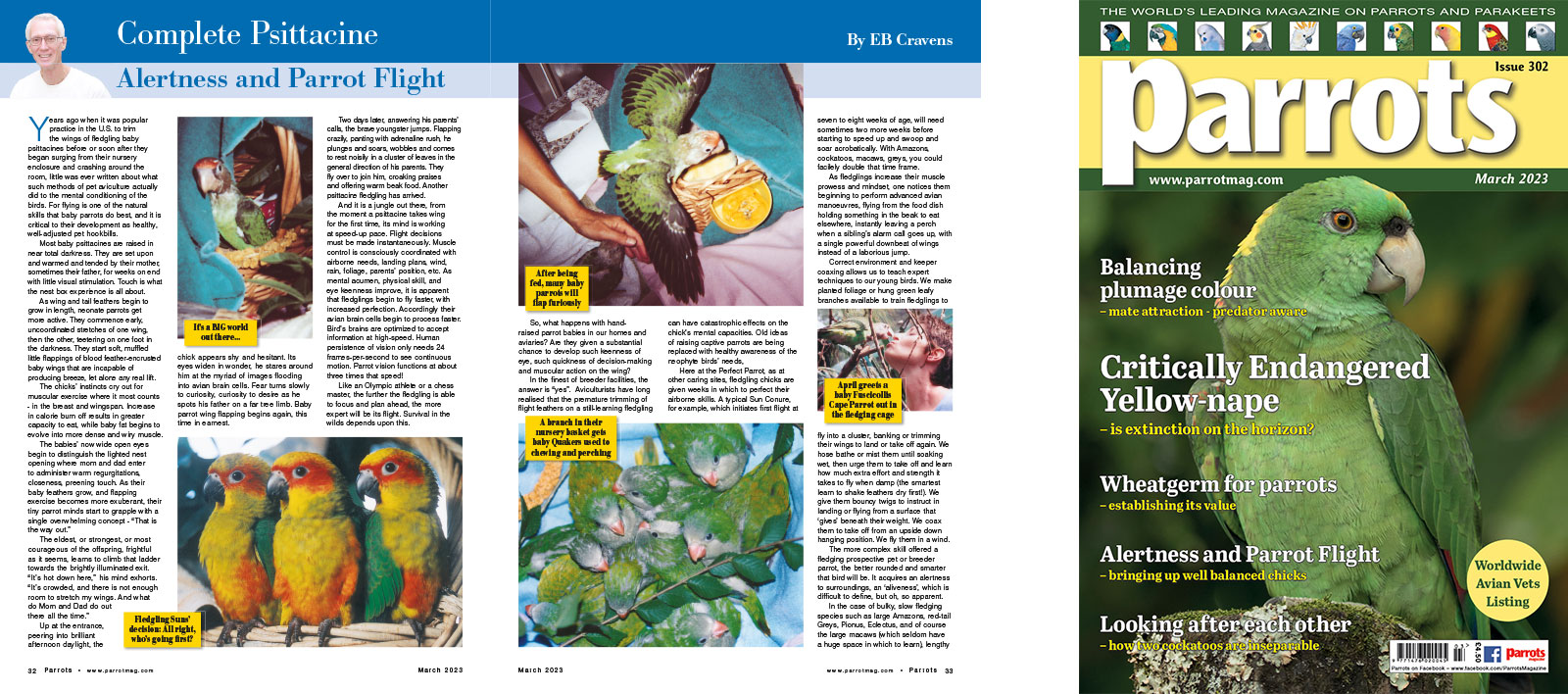
Complete Psittacine by Eb Cravens
Years ago when it was popular practice in the U.S. to trim the wings of fledgling baby psittacines before or soon after they began surging from their nursery enclosure and crashing around the room, little was ever written about what such methods of pet aviculture actually did to the mental conditioning of the birds. For flying is one of the natural skills that baby parrots do best, and it is critical to their development as healthy, well-adjusted pet hookbills.
Most baby psittacines are raised in near total darkness. They are set upon and warmed and tended by their mother, sometimes their father, for weeks on end with little visual stimulation. Touch is what the nest box experience is all about.
As wing and tail feathers begin to grow in length, neonate parrots get more active. They commence early, uncoordinated stretches of one wing, then the other, teetering on one foot in the darkness. They start soft, muffled little flappings of blood feather-encrusted baby wings that are incapable of producing breeze, let alone any real lift.

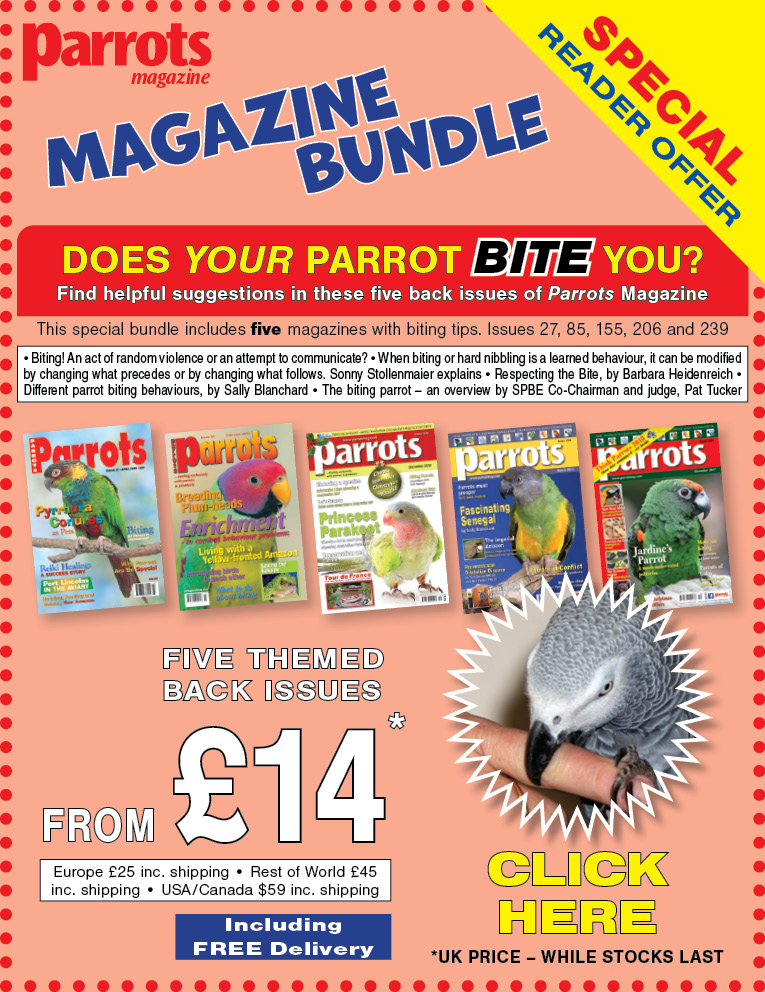
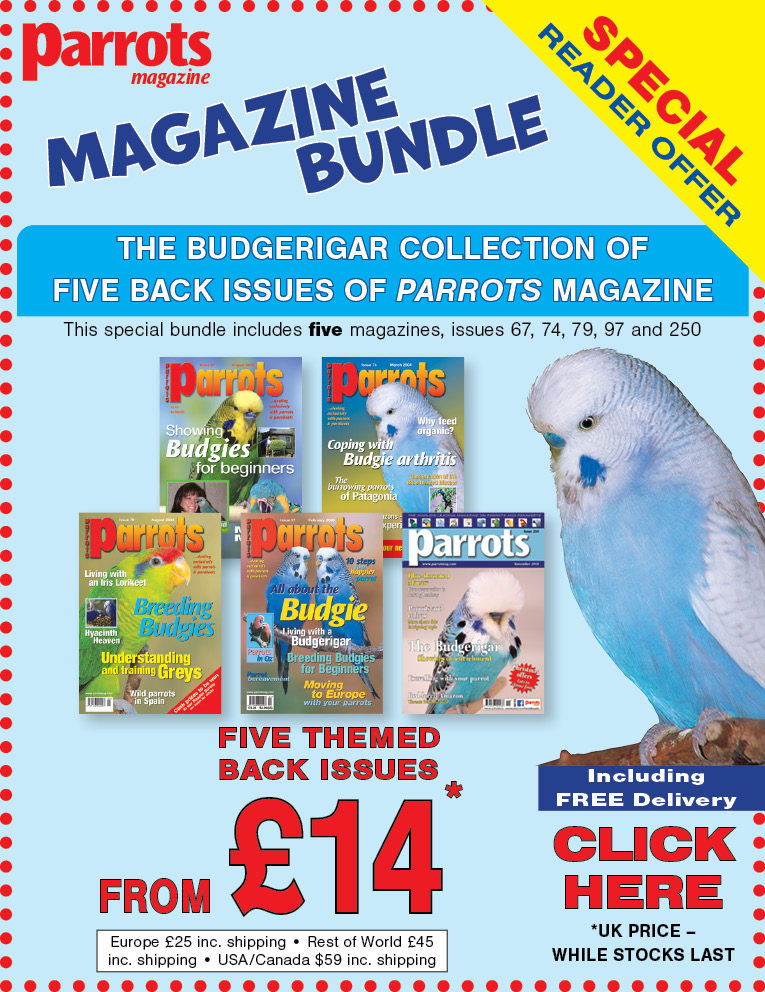
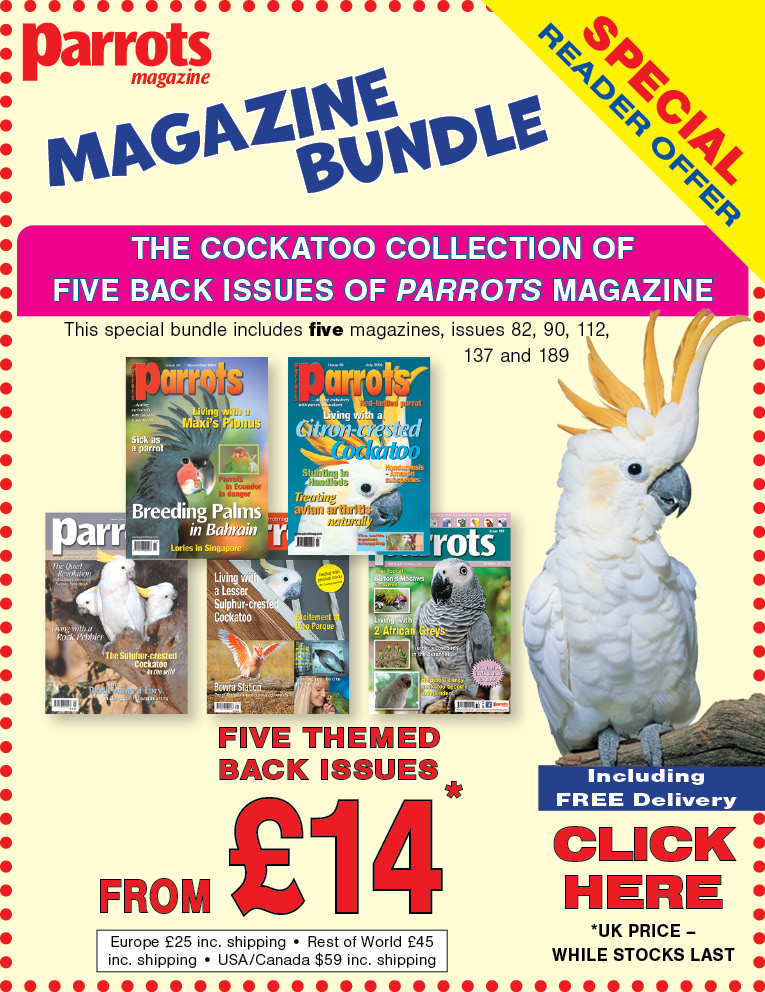
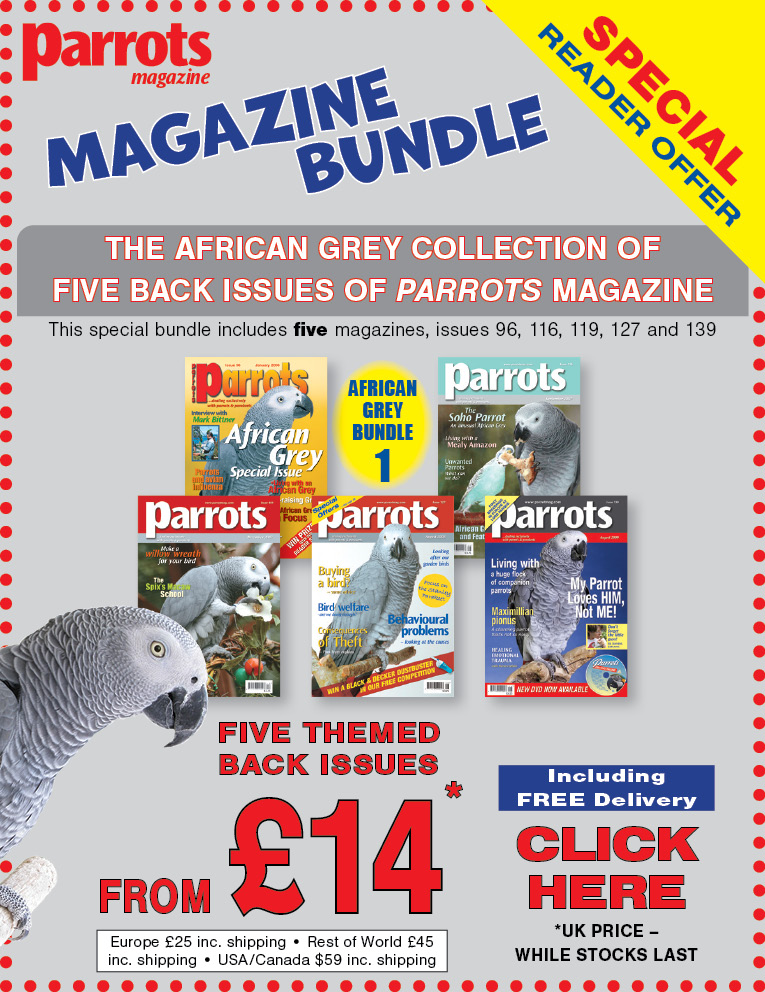

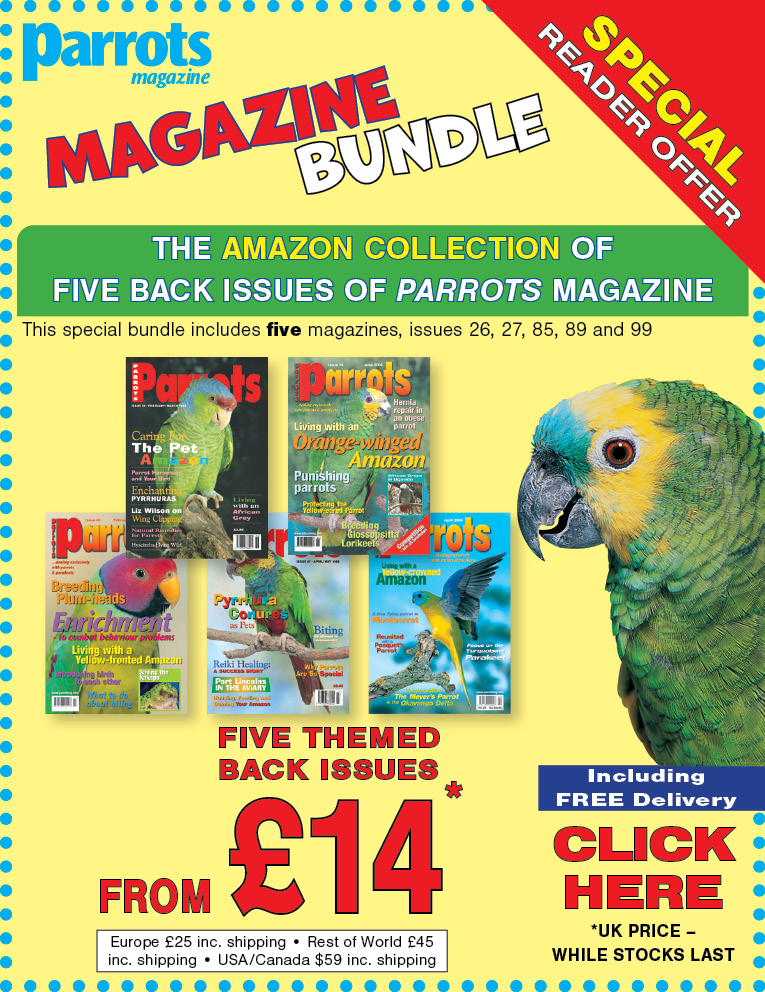

Parrot Chat
Buyers Guides
Breeding articles